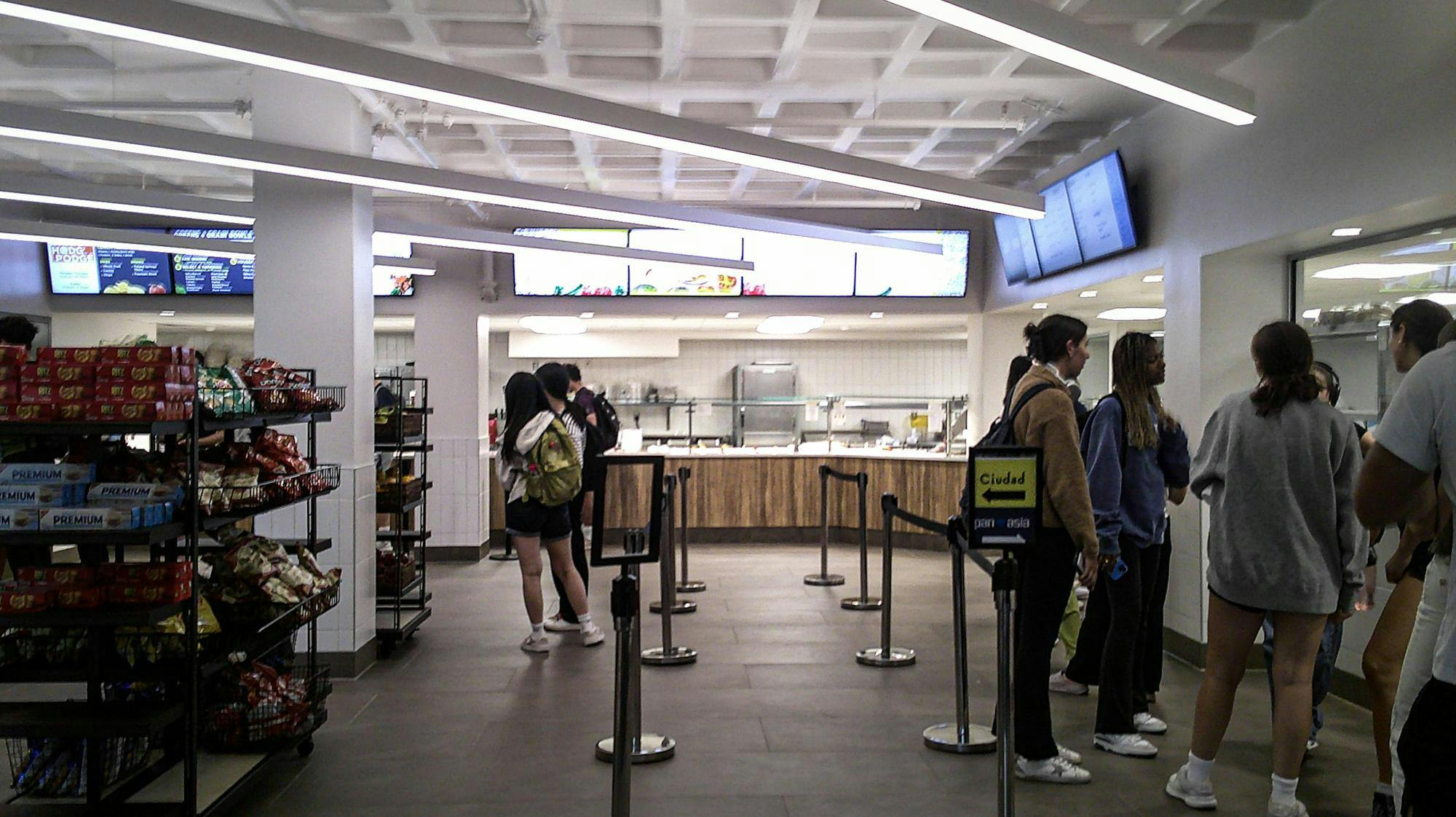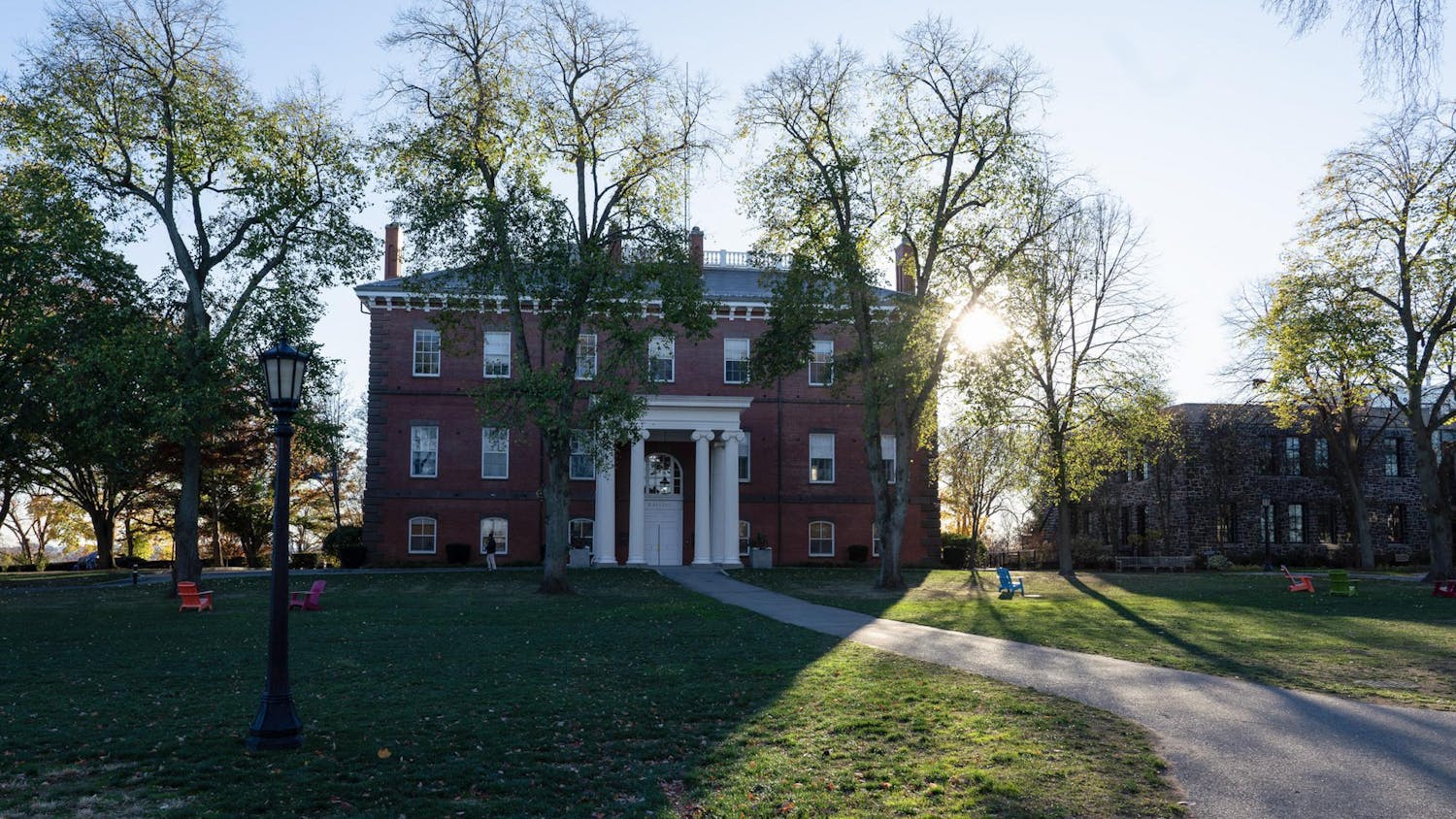Tufts’ grab-and-go options have returned in full after Kindlevan Café's reopening on Oct. 12. After being closed for construction since last spring, both Hodgdon Food-on-the-Run — which reopened at the start of the semester — and Kindlevan Café sport new looks and provide more options for on-campus dining.
Plans for renovations began during the COVID-19 pandemic when Tufts issued a $250 million bond to secure capital for future projects. Part of this money was set aside to improve on-campus dining.
Patti Klos, director of dining and business services, explained that Hodgdon and Kindlevan were renovated before other dining locations to use funding to support students as quickly as possible.
“How would we best spend that money?” Klos asked. “We knew that Dewick would be a more significant capital outlay and would take more than a summer to do. … We made this strategic decision to invest our dollars first in Hodgdon and Kindlevan because we thought that would provide [the] most support for students.”
Hinting at future plans, Klos also added that renovating the Dewick-MacPhie Dining Center “will likely require us to rely more on the other outlets.” Dewick-MacPhie is the university’s largest dining facility.
According to Klos, Kindlevan and Hodgdon have historically struggled to meet student demand.
“Hodgdon was not designed for the volume of takeout that it enjoys,” Klos said. “Kindlevan was not designed for the volume of participation that it garnered. … When we designed that space, we anticipated 300–400 transactions a day. At our highest demand, in the fall, [it] was about 1100 people.”
While only Kindlevan was slightly expanded, Klos believes both spaces are now better utilized to efficiently serve students.
“In Hodgdon, we wanted to reduce congestion,” Klos said. “There was a vestibule and an island, and people went around the island and it made for a very congested experience and long lines. … We were able to basically gut the serving area.”
Kindlevan’s new layout also works to combat long lines and overcrowding of the atrium’s gallery spaces and staircase, but is “still not great,” per Klos. The location is a work in progress and additions to the space are still being implemented. In the coming months, students should expect to see a fully realized pickup area for mobile app orders according to Klos.
Student reactions to the changes have been mixed. Juniors Aliyah Weiss and Nicole Alexandru appreciate the shorter wait times but are dissatisfied with the lack of change in food price and quality at Kindlevan and Hodge.
“Hodge before the renovations was super crowded and the lines took forever,” Weiss said. “And I definitely noticed the lines were faster. But I feel like … the quality of the food and the prices are just not worth it.”
Alexandru has now worked at both Hodgdon and Kindlevan.
“The flow of customers at both places was really, really bad, which is also something I hated as a customer in the past before renovations,” Alexandru said. “So now that they’re renovated, I understand that purpose and I think it succeeded at that. But if I’m talking about the location overall, I wouldn’t eat [at Kindlevan].”
Freshman Kent Carson expressed similar dissatisfaction with pricing but appreciates the grab-and-go options on campus.
“I use [the two locations] all the time,” Carson said. “I use Hodge constantly. … I’m always getting drinks or protein shakes and stuff from there and I get smoothies from Kindlevan a lot.”
According to Klos, renovations were “really focused on throughput, speed of service efficiency… [and] making the workspaces work better for the people who are putting your food together for you.”
“There’s more room between the service counter and the back counter,” Klos said. “So the workers can do their tasks without running into each other. There’s literally just a little bit more counter space so they can be more efficient.”
Klos identified a generally positive reception to changes from workers. Caroline Lever, a student worker at Kindlevan, appreciates the renovation’s changes to their work environment.
“Last year there was only one station where someone could make a smoothie and one station where someone could make coffee,” Lever said. “People were bumping to each other all the time. It was really chaotic, and barely enough people could fit behind the counter. … It’s just running much more smoothly because there’s space to walk.”
Klos added that staffing adjustments are being made to help with lines and more items will be added to the mobile app for order.
“We do well with the resources we have, [but] people always want more,” Klos said. “I don’t anticipate we’re going to add more venues, but we want to make the venues that we have function better, be more convenient and provide the kind of foods that students are looking for. So I definitely think it’s a worthwhile investment.”






